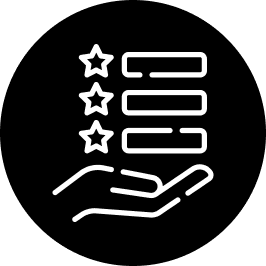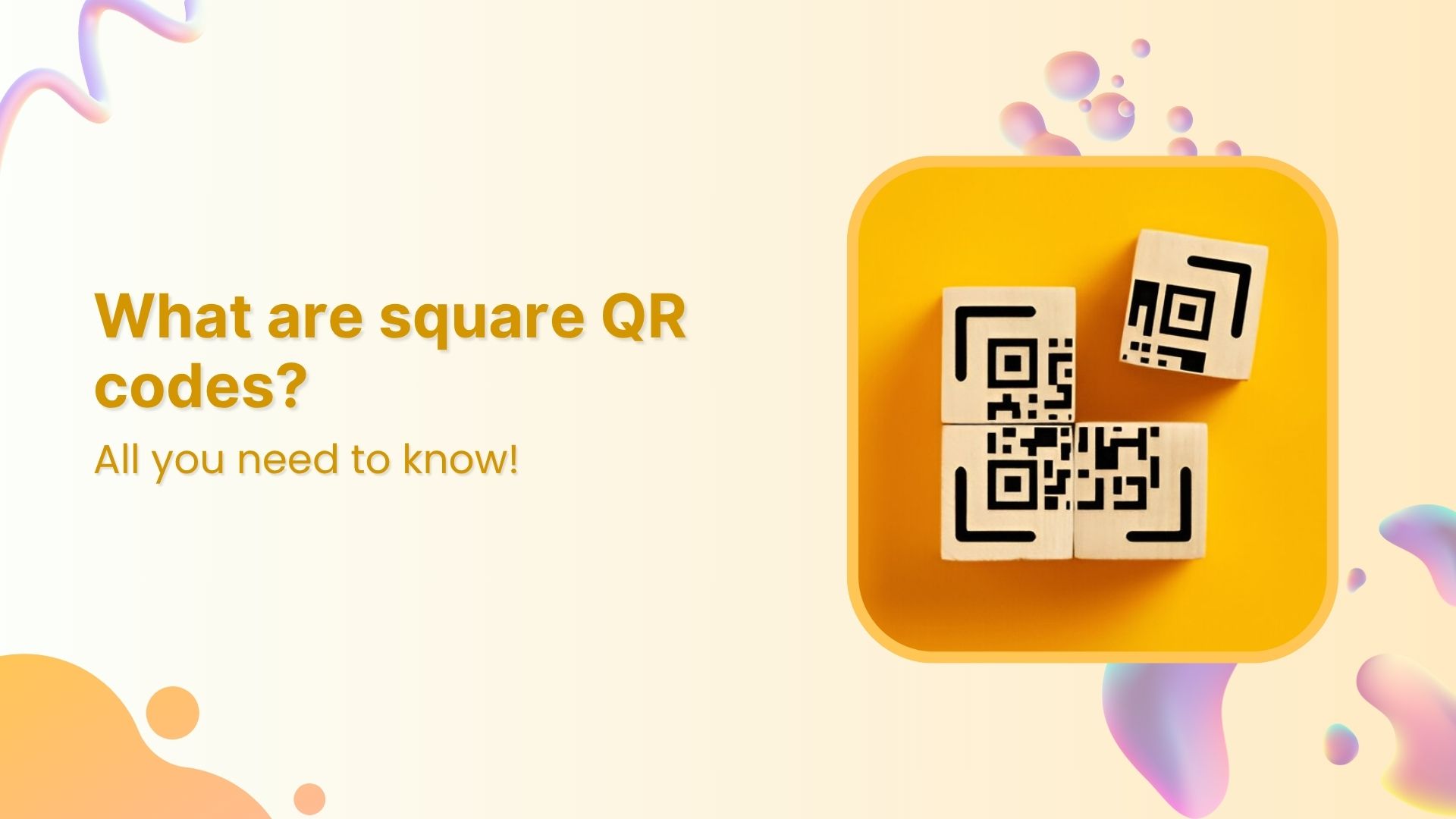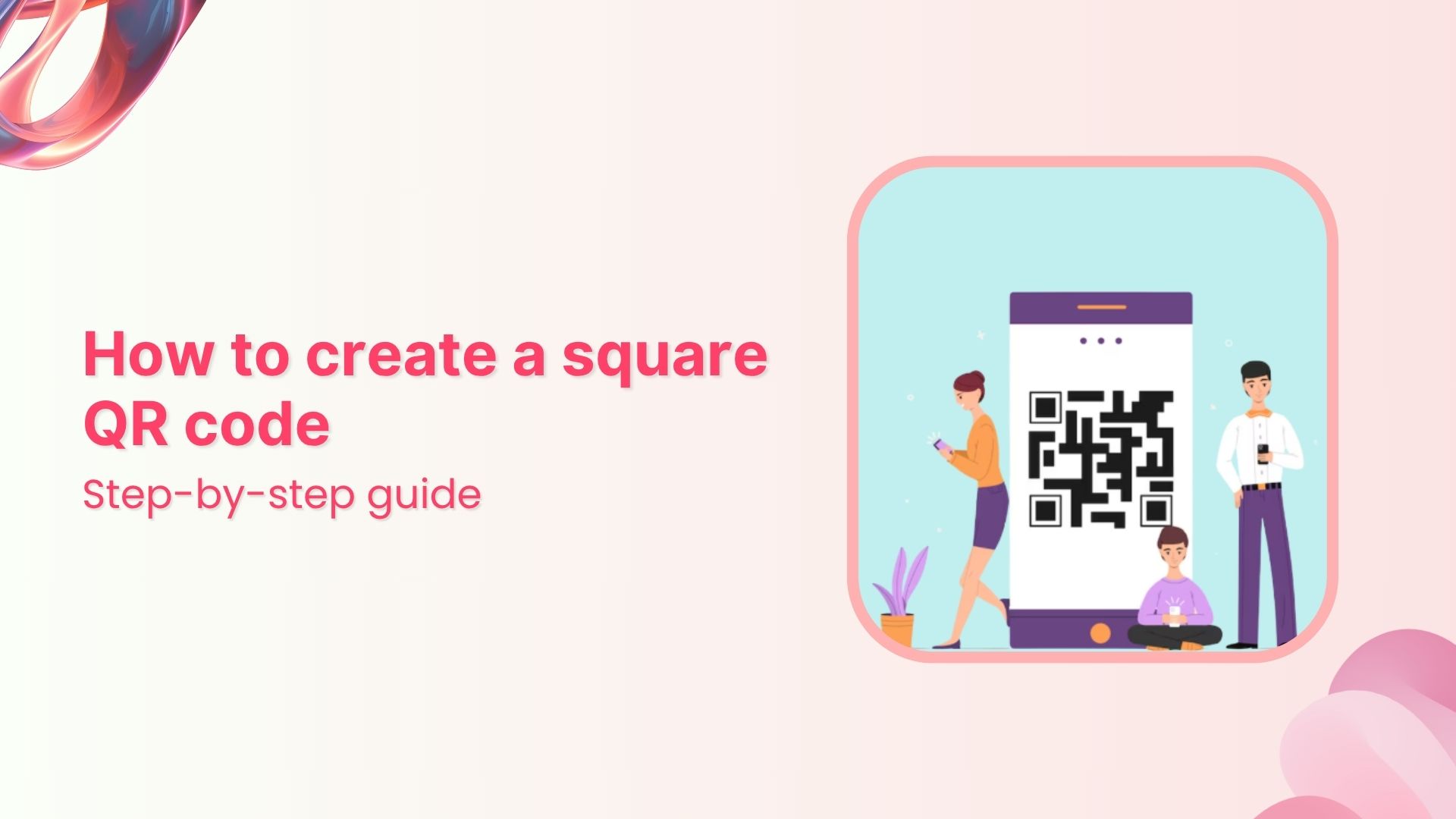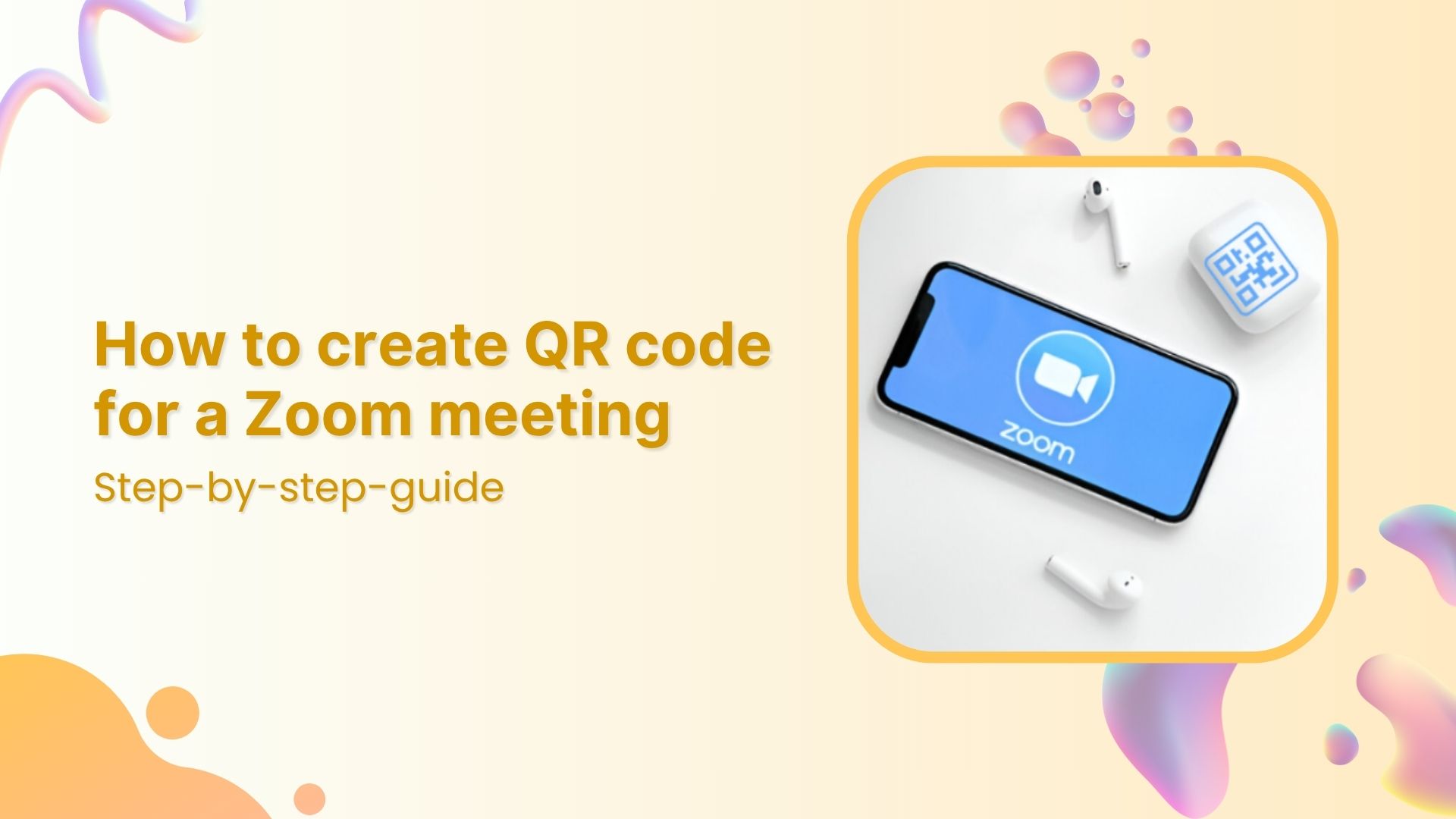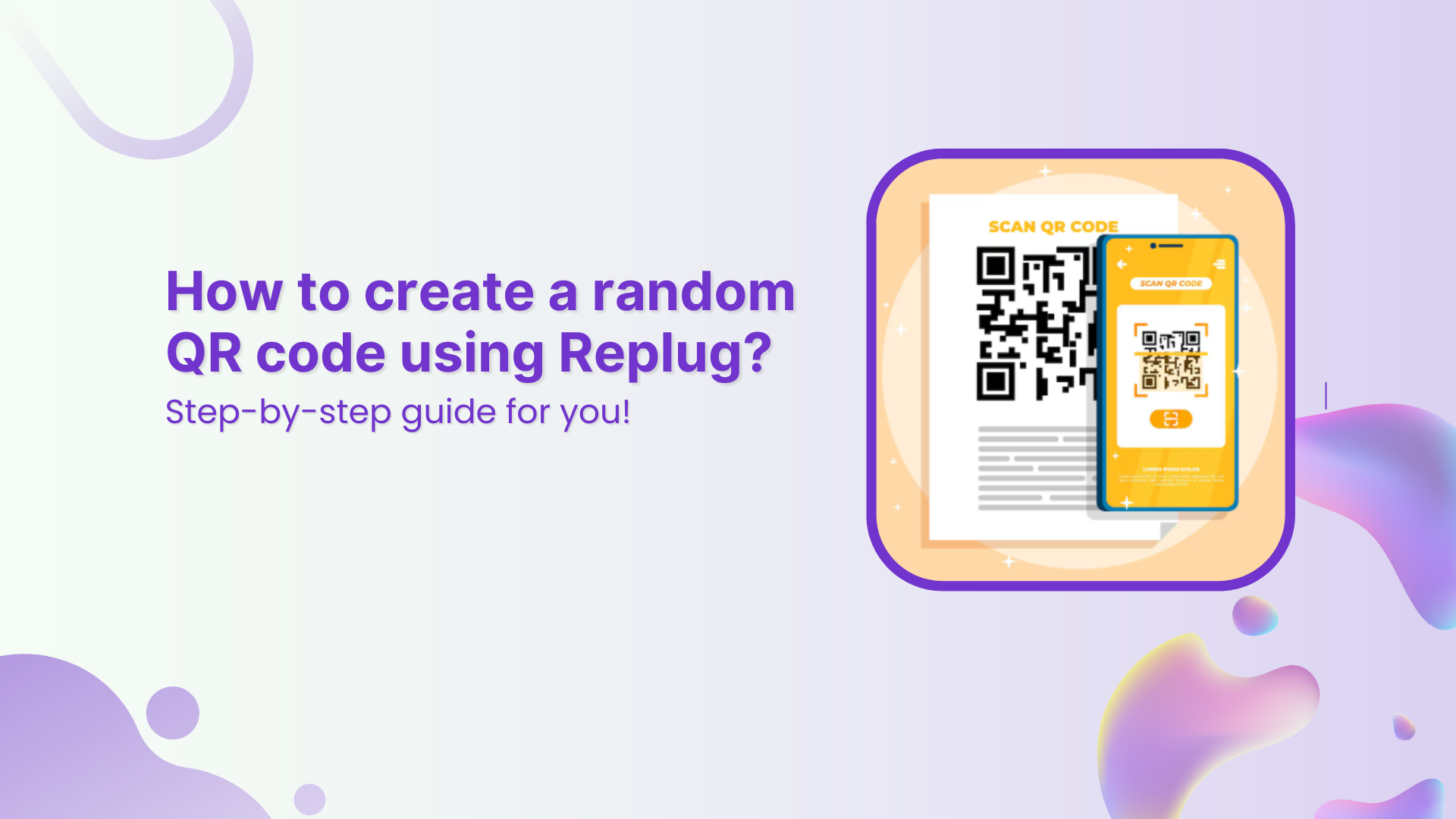QR Codes are on almost everything now; from product labels, menus, packaging, to posters, and even email signatures. In fact, a 22% increase in usage of QR codes is expected across different regions by 2025.
But creating and placing a QR Code is just half the job.
What happens after someone scans it?
Did it lead to a sale, a website visit, or just… nothing?
That’s where QR Code tracking comes in. It helps you answer one big question: is this working?
In this guide, we’ll explain how QR Code tracking works, how to use it effectively, and why Replug is one of the best tools to manage your QR codes.
Link Management Made Easy
Your go to link management tool for CTAs, branded and bio links, QR Codes, tracking and retargeting.
Get Started for FREE!
What is QR Code tracking?
QR Code tracking is the ability to analyze what happens after someone scans your code. It lets you collect data like how many times it’s been scanned, where those scans happened, when they happened, and what device was used.
Whether you’re running a marketing campaign, linking to a product manual, promoting an app, or sharing a digital menu; tracking helps you understand how people are interacting with your QR Codes.
Why QR Code tracking matters in modern marketing
Marketing today is all about data. You want to know what’s working, what’s not, and where your audience is actually engaging. With QR Code tracking, you get exactly that.
How Dunkin’ Donuts brewed up big wins with QR Code tracking
Dunkin’ Donuts, the popular coffee and donuts brand, launched a massive giveaway campaign using custom QR Codes printed on specially marked coffee cups. Customers could scan the code to visit the website, fill out a quick entry form, and enter to win prizes like $1,000 cash, free coffee for a year, DD cards, and daily rewards.
But this wasn’t just a fun promo, it was a smart marketing move powered by QR Code tracking. Dunkin’ could see how many people scanned the codes, where the scans were happening, and which stores were generating the most engagement. This gave them valuable insights into customer behavior and campaign performance, helping them refine their strategy on the fly. The results? Higher sales, stronger brand engagement, and more loyal DD Perks members.
And that’s just scratching the surface. With trackable QR Codes, brands can also:
- Promote their app and increase downloads
- Grow their social media following
- Redirect customers to limited-time discounts
- Educate buyers with videos, tutorials, or product info
- Add QR codes to displays or tags for product details, reviews, or augmented reality experiences
- Analyze QR Code usage to uncover audience behavior
- Use QR Code UTM parameters to track post-scan actions
- Adjust campaigns in real-time based on scan data
And it gets better. With QR Code customization, you can design codes that match your brand, logo, colors, style, without sacrificing trackability. So whether you’re placing a QR Code on your website, a product label, or a flyer; you’re not just adding a shortcut, you’re adding a data touchpoint.
In short: Scans are good. But knowing what happens after the scan? That’s great marketing.
Static vs. Dynamic QR Codes
Not all QR Codes work the same way, especially when it comes to tracking. If you’re looking to monitor scans, gather data, or update your links without reprinting, it’s important to understand the difference between static and dynamic QR Codes.
Here’s a quick breakdown to help you choose the right type for your needs:
| Feature | Static QR Codes | Dynamic QR Codes |
| Trackable | ❌ Not trackable | ✅ Fully trackable (scans, location, device, time) |
| Editable after creation | ❌ No | ✅ Yes, you can change the destination URL anytime |
| Best for | Simple, one-time use (e.g. contact info, menus) | Marketing campaigns, app promotions, product packaging |
| QR Code analytics support | ❌ None | ✅ Supports full QR Code analytics |
| Scan data insights | ❌ Not available | ✅ Real-time scan data (location, device, timing, etc.) |
| Includes UTM parameters | ✅ But hard-coded | ✅ Easily add and update UTM parameters |
Why QR code tracking is important
You’re not just creating QR codes for the sake of it. You’re creating them to drive action; visits, signups, installs, purchases. Tracking tells you if that’s actually happening.
Let’s break down the benefits of QR Code tracking:
- Real-time insights: No need to wait until your campaign ends. With QR code tracking, you can watch scans happen as they come in. That means if something’s off, you can pivot fast.
- Data-driven marketing: Guessing is expensive. QR Code analytics give you exact numbers, such as: how many people scanned, from where, using what device, and when. This helps you make better decisions, faster.
- Tracking offline to online engagement: You can track traffic from QR codes placed on flyers, packaging, posters, or business cards and connect your offline materials to real online activity.
- Track scan behavior by time, location, and device: Want to know if people scan more at night? Or if users in a certain city are more active? QR code tracking answers that. You’ll know where a code has been scanned and on what OS, so you can tailor future campaigns accordingly.
- Improve campaign performance: If one version of a QR code ad is doing better than another, tracking lets you spot that early. Double down on what works and fix what doesn’t.
- Enhance ROI: You’re already spending time and resources. Trackable QR codes prove whether you’re getting a return on investment. By analyzing QR Code usage and scan behavior, you’re in a better position to justify your campaign spend.
- Optimize user experience: Maybe your iOS users are bouncing. Or people scanning from certain cities aren’t converting. QR code tracking gives you the clues to tweak landing pages, content, and CTAs so users have a smoother journey.
And with tools like Replug, all of this becomes seamless. You get dynamic, editable, fully trackable QR Codes along with a complete dashboard that breaks down scan data in real-time; no complicated setup, no extra plugins.
Branded Short Links
Create and track branded short links for your business for better conversions.
Brand Your Links Now!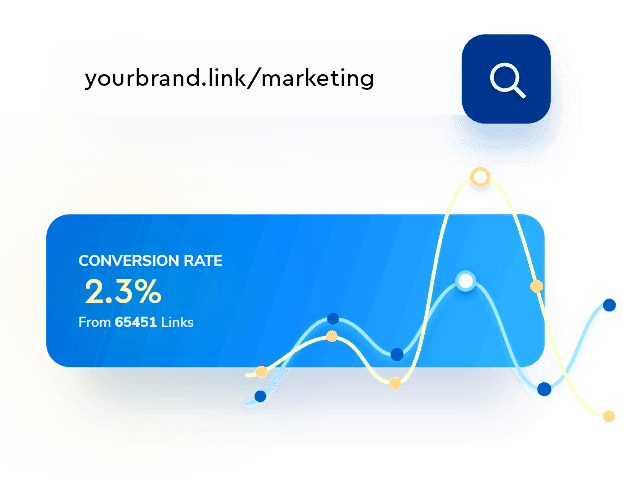
Key QR code tracking metrics to know
QR codes have become a go-to tool for connecting offline and online experiences, but their real power lies in what you can track. From location and device type to referral sources and total scans, the right tracking can give you a clear view of how your campaigns are performing.
Here’s an example of a QR code created using Replug:
From Replug’s QR code dashboard, you can easily track the following metrics:
- Total QR scans
See how many times your QR code has been scanned. This is helpful for measuring reach.
- Total Clicks
Counts every time your link is clicked, including multiple clicks from the same user.
- Unique Clicks
Tracks individual users. If someone scans your code five times, it still counts as one unique click.
- Location (country, city, and region)
Track where a code has been scanned to fine-tune your geotargeting strategies.
- Device/Operating system
Knowing if users scan via Android, Windows, or iOS helps you optimize the landing page or app store experience.
Also read: How to scan a QR code? [Android + iPhone]
- Browser
Track which browser was used to open the QR code link to ensure compatibility and optimize performance.
- Referral
Track where scans come from (e.g. WhatsApp, Instagram) to spot your top-performing channels.
- Day and month
Track engagement trends by day and month to figure out when people are most active.
In Replug, all of these metrics are displayed inside a dedicated QR code analytics dashboard; fully filterable and exportable.
What is the best way to track QR Code scans?
The best way is to use an advanced dynamic QR code generator or a link management tool with built-in analytics. Static codes don’t offer tracking, but dynamic ones let you monitor scans by location, device, browser, and referral source.
Replug does all this and more. You can edit links anytime and view real-time insights from one clean dashboard.
Link Management Made Easy
Your go to link management tool for CTAs, branded and bio links, QR Codes, tracking and retargeting.
Get Started for FREE!
How to track QR Codes with Replug
If you’re using a free static QR code generator, you’re not going to get scan data. Instead, consider using a dynamic QR code generator like Replug that supports full analytics.
Step 1: Log in to Replug
Start by logging into your Replug account. If you’re new, you can sign up for a 14-day free trial.
Step 2: Create your QR Code
Go to the QR Code dashboard and click on “Create New.” Choose your QR code type (URL, file, social media, etc.), and customize the design to match your brand. Click “Create QR Code” from the preview on the right, then download and use it across your social or print media; wherever you need it.
Step 3: Track your analytics
Head over to the Analytics to monitor your QR code’s performance. Filter data by date, campaign, or tags. Replug shows you everything from total and unique scans to location, device type, browser, and referral source.
That’s it. Your code is live, editable, and fully trackable.
Cherry on top? Replug visualizes your data with a clear graph that distinguishes between QR scans and total link clicks so you can instantly see how many people scanned the code vs. actually clicked through.
Best practices for QR code tracking
1. Nail the design and placement
- Make it easy to scan
- Use a call-to-action (e.g., “Scan for 20% off”)
- Don’t hide it in a corner or put it too low
Create compelling Call-to-Actions to boost conversions
Improve your click through rate by creating catchy CTAs for your marketing campaigns.
Get Started For Free!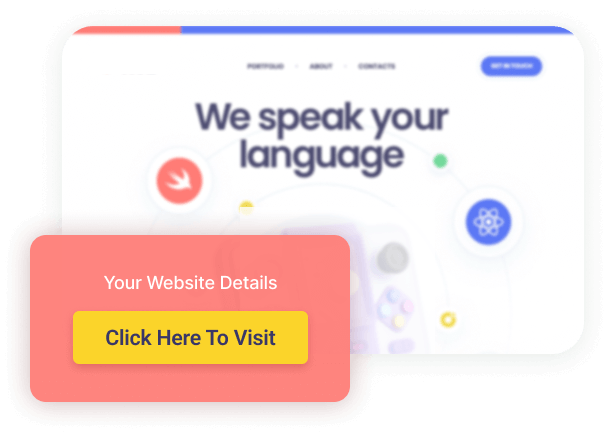
2. Route traffic smartly with one QR code
With Replug’s link rotator, you can send different users to different URLs, all from a single QR code. Set up routing rules based on device type, location, time, or traffic split. It’s ideal for running localized campaigns, showing platform-specific pages, or simply personalizing the experience without ever reprinting your code.
3. A/B test up to 10 URLs behind your QR code
Not sure which landing page will perform best? With Replug, you can A/B test up to 10 different URLs linked to your QR code. Rotate between variations and let the scan data reveal which headline, CTA, or offer drives the most conversions.
4. Retarget every QR code scan
Don’t let your traffic go cold. Replug lets you add retargeting pixels to the links behind your QR codes. This way you can reduce cart abandonment and add anyone who scans your QR code to your ad audiences. This is perfect for staying top-of-mind across Facebook, Google, and other platforms.
5. Stick with dynamic QR codes
Static codes are a one-and-done deal. But with Replug’s dynamic QR codes, you can update destinations anytime, and track real-time QR code analytics.
Avoid common mistakes
- Linking to non-mobile-friendly pages: Most scans happen on smartphones. If your landing page isn’t mobile-optimized, you’re setting yourself up for high bounce rates. Always test your landing page on different devices.
- Skipping UTM tags: Without UTM parameters, you lose the ability to track traffic accurately. Make it a habit to tag every QR code link. Tools like Replug make this easier with their UTM parameter builder.
- Ignoring scan behavior: Pay attention to when, where, and how people are scanning your QR codes. This helps you fine-tune campaigns for better performance. Look for platforms that offer detailed analytics to help spot trends.
- Using low-quality or blurry codes: Poor-quality or blurry QR codes can fail to scan, especially when printed. Replug allows you to download your QR code in JPG, PNG, SVG, and WEBP; all in high quality.
- Forgetting to test before launch: Test your QR code on multiple devices and camera apps to ensure it works under real-world conditions.
- Over-designing your QR code: It’s tempting to brand your QR code with colors and logos, but don’t compromise readability. Stick to high-contrast colors and make sure there’s enough white space around the code.
- Sending everyone to the same page: Different users may respond better to different content. With Replug, you can use traffic routing (link rotation) to send users to different URLs based on device, location, or time.
Also read: Why is My QR Code Not Working: 9 Reasons to Consider
Real-world use cases
- E-commerce campaigns: Add QR codes to product packaging that lead to tutorials, upsells, or reviews. It’s an easy way to track post-purchase engagement and boost customer retention.
- QR codes for bio links: Create a single QR code that links to a branded, custom bio page with all your important links. With Replug, you can build and track it in minutes.
Create bio links for Instagram, TikTok, Facebook, Twitter & LinkedIn.
Create fully customizable bio link webpages to drive traffic from and to your social media channels, online store, website and much more.
Learn More!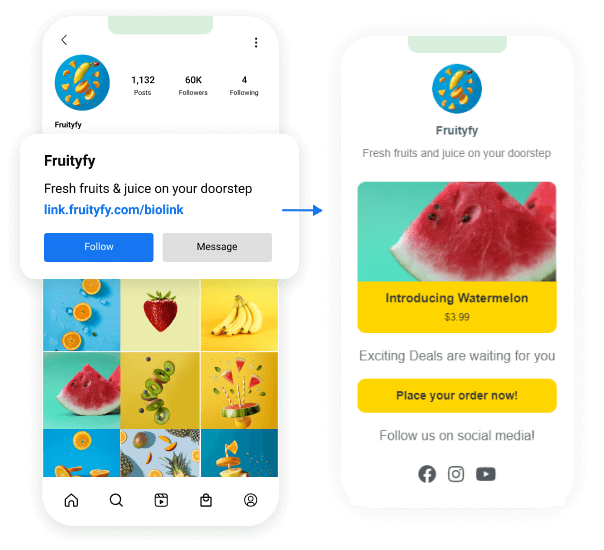
- Event promotions: Place unique QR codes in different event zones, booths, or flyers. Use analytics to track where your foot traffic is coming from.
- Print advertising: Add QR codes to billboards, brochures, or magazine ads. Replug’s tracking shows you exactly how your print campaigns are performing.
- App downloads: Replug’s smart, app deep links combined with QR codes route users to the correct app store directly, making downloads seamless and user-friendly.
- Social campaigns: Track QR code scans across Instagram, TikTok, YouTube, and more. See which platforms are actually driving results.
Conclusion
Creating a QR code is easy. Knowing if it worked? That’s where QR Code tracking earns its place in your marketing stack.
From measuring engagement to improving ROI, tracking lets you treat each scan like a data point—and every data point like an opportunity.
And with Replug? QR code tracking becomes more than a feature—it becomes a strategy.
FAQs on QR Code tracking
Is QR code tracking free?
Some platforms offer basic QR code tracking for free, but for detailed analytics (like location, device, and referral tracking), you’ll need a tool like Replug. It offers a 14-day free trial with full tracking features.
How to track QR code scans?
To track scans, use a dynamic QR code generator like Replug. It lets you monitor real-time metrics such as total vs. unique scans, user location, device type, browser, and referral sources, all from a single dashboard.
Can I do QR code tracking online?
Yes, many tools offer QR code tracking online through web dashboards. You can view scan activity, filter by campaign, and download performance reports.
What is the best QR code generator for tracking?
A good QR code generator should support dynamic codes, offer in-depth analytics, and allow URL editing. Replug checks all the boxes; plus it adds features like branded links and retargeting.
What is a QR code tracking and reporting system?
It’s a platform that helps you monitor, measure, and analyze QR code performance. This includes data like scan counts, geographic location, device types, and channel sources.
Is there a QR code tracking app?
While most tools work through a browser, some offer mobile-optimized dashboards so you can monitor scans on the go. A full mobile app isn’t always necessary if the web version is responsive.



















